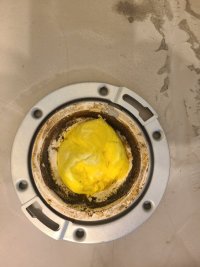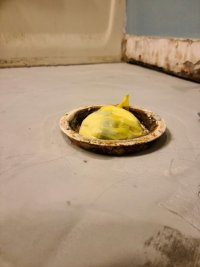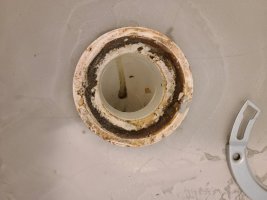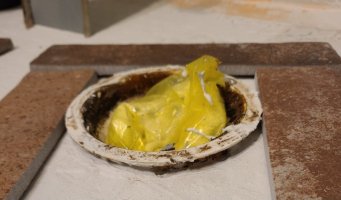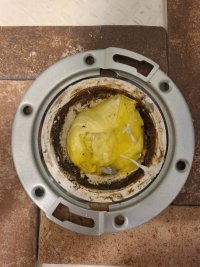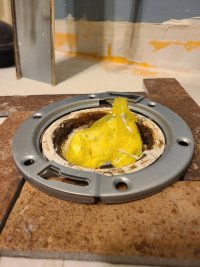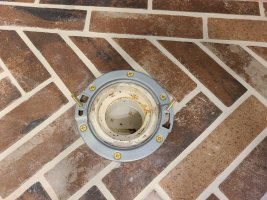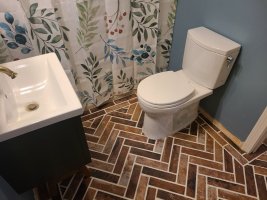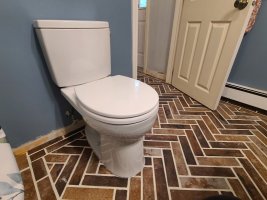ThatIsTheWay
New Member
Hi all,
First time poster here. I'm currently in the middle of a bathroom/laundry room floor reno and am particularly stumped on what to do about this toilet flange.
I ripped up the layer cake of tile, cement board, sheet vinyl, then thin plywood underlayment to get to my subfloor. Now that I have the subfloor fairly level, I want to address the toilet flange repair as I embark on putting down Ditra and new tile.
When I removed the old toilet, there was a vinyl spacer on top of a rusted out and completely corroded metal flange closet bolt ring. I chiseled and pryed that out and purchased one of those Oatey Moss Bay 2-piece replacement metal rings.
Unfortunately, as you can see in the picture, it does not fit around the PVC flange at all. I assumed these things were universal, but evidently not. I even bought a few other brands to see if it was Oatey specifically that didn't fit, and they were all too wide.
What other reliable solution can be used for this scenario? The flange also appears to be offset if you look straight down into the pipe. Kind of like this: https://www.oatey.com/products/oatey-level-fit-offset-closet-flange-metal-ring-1468302402
Does that limit what retrofit options you can use? The ID of the pipe I believe is 3" if you were to cut off the flared part at the top. I've never dealt with toilet flange repairs before so I'm feeling kind of out-to-sea...
Appreciate any thoughtful advice.
First time poster here. I'm currently in the middle of a bathroom/laundry room floor reno and am particularly stumped on what to do about this toilet flange.
I ripped up the layer cake of tile, cement board, sheet vinyl, then thin plywood underlayment to get to my subfloor. Now that I have the subfloor fairly level, I want to address the toilet flange repair as I embark on putting down Ditra and new tile.
When I removed the old toilet, there was a vinyl spacer on top of a rusted out and completely corroded metal flange closet bolt ring. I chiseled and pryed that out and purchased one of those Oatey Moss Bay 2-piece replacement metal rings.
Unfortunately, as you can see in the picture, it does not fit around the PVC flange at all. I assumed these things were universal, but evidently not. I even bought a few other brands to see if it was Oatey specifically that didn't fit, and they were all too wide.
What other reliable solution can be used for this scenario? The flange also appears to be offset if you look straight down into the pipe. Kind of like this: https://www.oatey.com/products/oatey-level-fit-offset-closet-flange-metal-ring-1468302402
Does that limit what retrofit options you can use? The ID of the pipe I believe is 3" if you were to cut off the flared part at the top. I've never dealt with toilet flange repairs before so I'm feeling kind of out-to-sea...
Appreciate any thoughtful advice.

